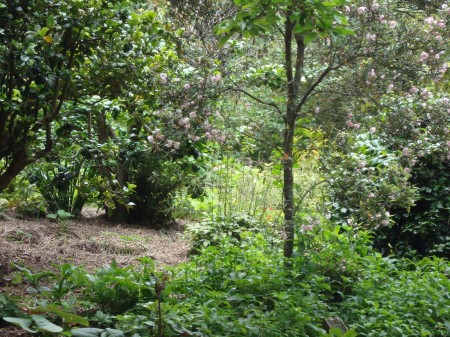Sailors Died Of Scurvy In The Old Days: Scurvy is a Vitamin C deficiency. A diet completely devoid of Vitamin C will kill you in the end. Lack of Vitamin C causes a breakdown in the connective tissues of the body, as well as the capillary blood vessels. This l0ng term effects of eating foods which are deficient in Vitamin C are: loose teeth, bleeding gums, and sore and weak joints. The small capillary blood vessels begin to bleed under the skin, resulting in patches of small red dots. Haemorrhages can occur in serious cases, causing strokes and damage to the heart muscle and the brain.
Vitamin C kills bacteria in the blood stream, which means that it acts as an antibiotic. Large doses of Vitamin C have cured many infectious diseases, including cases of viral pneumonia and meningitis. More about Vitamin C in curing infectious disease later – back now to symptoms of deficiency of Vitamin C, as presented in scurvy:
According to Dr Rudolph Ballentine, M.D., scurvy killed more than half the sea men on a ship which set out from England in 1739, heading for the Pacific. Out of 961 men on board, 626 died on the journey, mostly from scurvy, or Vitamin C deficiency.
Citrus juice had been known, since 1616, to prevent and reverse scurvy disease: Sir Richard Hawkins saved his men from the scourges of scurvy by using oranges and lemons in the daily diet. But it was several hundred years before controlled experiments were done which proved conclusively that vitamin C prevented and cured scurvy. This proof of Vitamin C being effective as a prophylactic and as a remedy for scurvy was the work of James Lind, who worked at the English Naval Hospital. There, he observed around 300 to 400 cases of scurvy each day. His experiment was to give two oranges and one lemon daily to two of the sailors in his study who had scurvy. The other men in the experiment were given other treatments, including cider vinegar, and sea water, as a remedy for their scurvy. The two men given the Vitamin C treatment via the citrus fruits recovered quickly from their scurvy and became well enough to nurse the other men, who did not respond from the other treatments.
Eventually, the Royal Navy began using citrus juice, ascorbic acid, on board all their ships. The cheapest source of citrus was from India, and this was a small green lime. This green lime citrus fruit became part and parcel of being at sea, which is how the term for a sailor, ‘limey’, got coined. The result of the lime treatment was that scurvy was eradicated from the British navy ships within a couple of years of its use, giving the British the physical power to dominate the French coast during the Napoleonic wars, and annihilate the French navy.
Vitamin C has a history of being shunned by the medical profession and the authorities: Citrus juice was known, way back in 1616, to cure and prevent scurvy. Meanwhile, thousands of sailors still died of scurvy, because citrus juice was not adopted as a preventative measure on board ships. It was a few hundred years later that James Lind did controlled experiments on citrus, and even then it was fifty years after James Lind’s experiment, which proved conclusively that citrus cured and prevented scurvy, before citrus fruit was to become mandatory on British navy ships. Even when the proof is there, these easy solutions to health problems are not so easily taken up by the authorities.
It is the same story today, with Vitamin C: Vitamin C is a natural antibiotic and therefore negates the need for vaccinations of various kinds. Hundreds of doctors, naturopaths and alternative therapists all over the world swear by Vitamin C therapy for the prevention and cure of cancer, arthritis, swine flu, scarlet fever, and many other infectious diseases, yet the authorities still refrain from using Vitamin C in hospitals, or as a regular treatment in medical practice.
What Foods Have Vitamin C? All fruits and Vegetables contain vitamin C.
The highest sources of Vitamin C are citrus fruits of all kinds: lemons, grapefruit, oranges, tangelos, mandarins, limes. Cranberries, strawberries, grapes, blackcurrants, raspberries, mango, paw paw, pineapple, pomegranate, persimmons, and kiwifruit, are all high in Vitamin C. Capsicums, green and red peppers, tomatoes, tamarind, dates, raisins, sultanas, peaches, apricots, plums, nectarines, pears, apples, all contain Vitamin C. Spinach, silver beet, broccoli, brussels sprouts, lettuce, mung bean sprouts, alfalfa sprouts, lettuce, raw cabbage, raw parsley, raw coriander, basil, comfrey, potatoes, raw carrots, and rhubarb, are all rich sources of Vitamin C.
A lot of Vitamin C is destroyed in cooking, which is why those daily salads, and the eating of fresh fruit, are very important. However, cooked broccoli, potatoes with their skins left on, spinach, and many other Vitamin C rich foods still retain some of their Vitamin C after cooking if they are not cooked for too hard or too long.
Resource Books: “Diet and Nutrition – A Holistic Approach”, by Rudolph Ballentine, M.D., published by The Himalayan International Institute, Honesdale, Pennsylvania, USA, 1978.
“New Choices in Natural Healing”, edited by Bill Gottlieb, editor of ‘Prevention’ magazine, published by Rodale Publishing Inc., Pennsylvania, USA, 1995.
“Your Health – Vitamins and Minerals”, by Russell Frank Atkinson, published by Doubleday Press, NSW, Australia, 1982.


